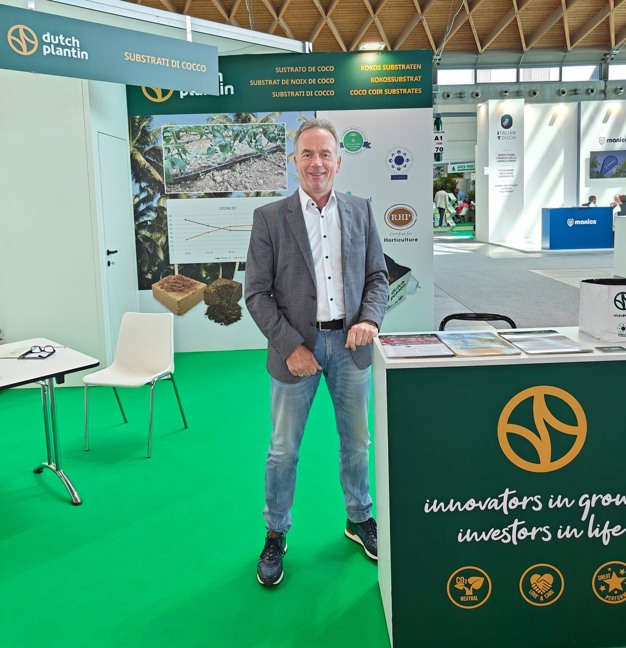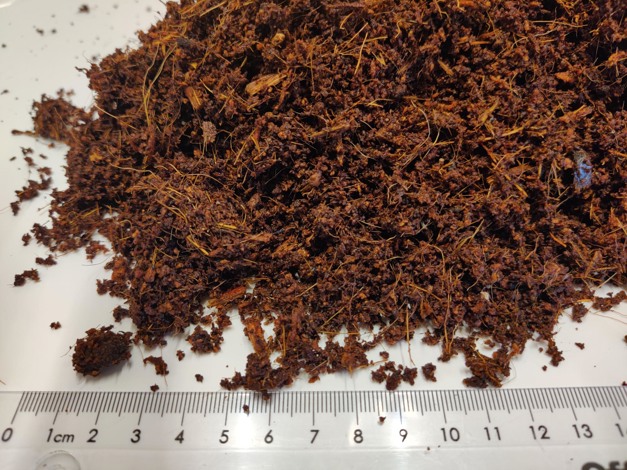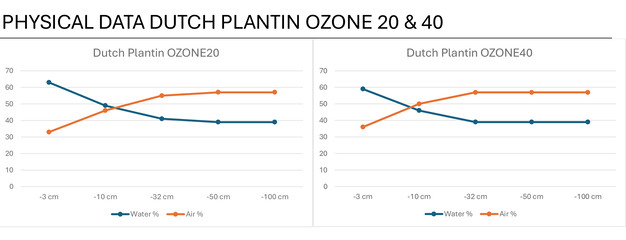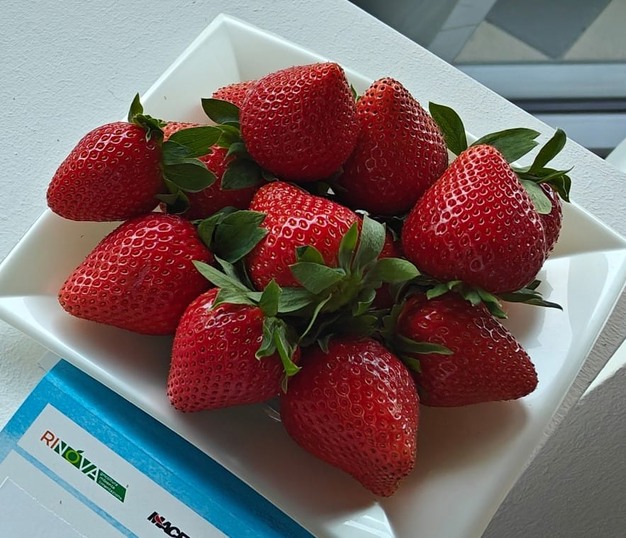"An ideal coconut substrate has a percentage of air between 30 and 50 percent. But then, actually, there's not much attention paid to the distribution of the air," says Wim Roosen from Dutch Plantin. "Equally important is maximizing the rootable volume." With this in mind, the company has developed the substrate Ozone.
 Assessing the coarseness of a substrate by touch and sight actually gives a misleading picture, Wim notes. "For a long time, we built coconut substrates from pith, chips, and fibers. All three components are produced separately, and the mixture is composed based on the customer's preference," he explains.
Assessing the coarseness of a substrate by touch and sight actually gives a misleading picture, Wim notes. "For a long time, we built coconut substrates from pith, chips, and fibers. All three components are produced separately, and the mixture is composed based on the customer's preference," he explains.
"To increase air in the substrate, a higher percentage of chips was often chosen. But that gives a wrong impression. Chips indeed provide a higher air percentage, but at the same time, they are a difficult-to-control product: they are cut pieces of a nut, a rather solid product. Some water can be absorbed, but it's hardly bufferable or washable. Moreover, there's hardly any air within the chip itself, meaning roots can hardly grow into them."
He clarifies that the higher air percentage in mixtures with many chips mainly comes from the air between the chips. "The rootable volume, which is what you need, remains limited." He compares it to filling a container with one large marble versus 60 smaller marbles. "The percentage of air is the same, but the distribution is much more even when you mix in smaller pieces."

To address this, Dutch Plantin developed the Ozone blend, which utilizes microchips: components ranging from 1 to 8 millimeters. "Smaller, shorter, or thinner chips make all the difference. These microchips are easier to buffer and wash." They are mixed with coarse coconut pith and short coconut fibers, creating Ozone: a substrate with an average air percentage of around 40%, depending on the percentage we add. "These new micro/mini chips are not easy to produce, but they greatly enhance uniformity and consistency, which is what growers want."
The substrate has been enthusiastically received by British strawberry growers in recent years and is now also being used on the mainland in greenhouses, such as by Belgian tomato growers. Wim expects it to quickly gain ground in pressed grow bags for vegetables and strawberries in the coming years.

The demand for lighter products is also visible in the loose bulk segment in the Netherlands, for which Dutch Plantin developed Softfruitmix. "A similar product: coarser than coconut pith, providing more air."
Additionally, following the same concept, a coconut fiber mix has been developed for potting soil producers in the Netherlands and Germany: a coarser coconut with a higher percentage of air. "It's all about an optimal air percentage combined with a maximum rootable volume. That's what ultimately results in healthy cultivation."

The pressed coconut products were on display this week at the Macfrut in Rimini. Wim is there for the first time due to increasing interest from Italy. "We work with various strawberry and tomato growers, but also with a kiwi plant nursery, for example." Demand for stable, quality coconut is also increasing in other Southern European countries. "Greece, but also in Spain, for example," he says. "So, we're reaching out to the customers."
